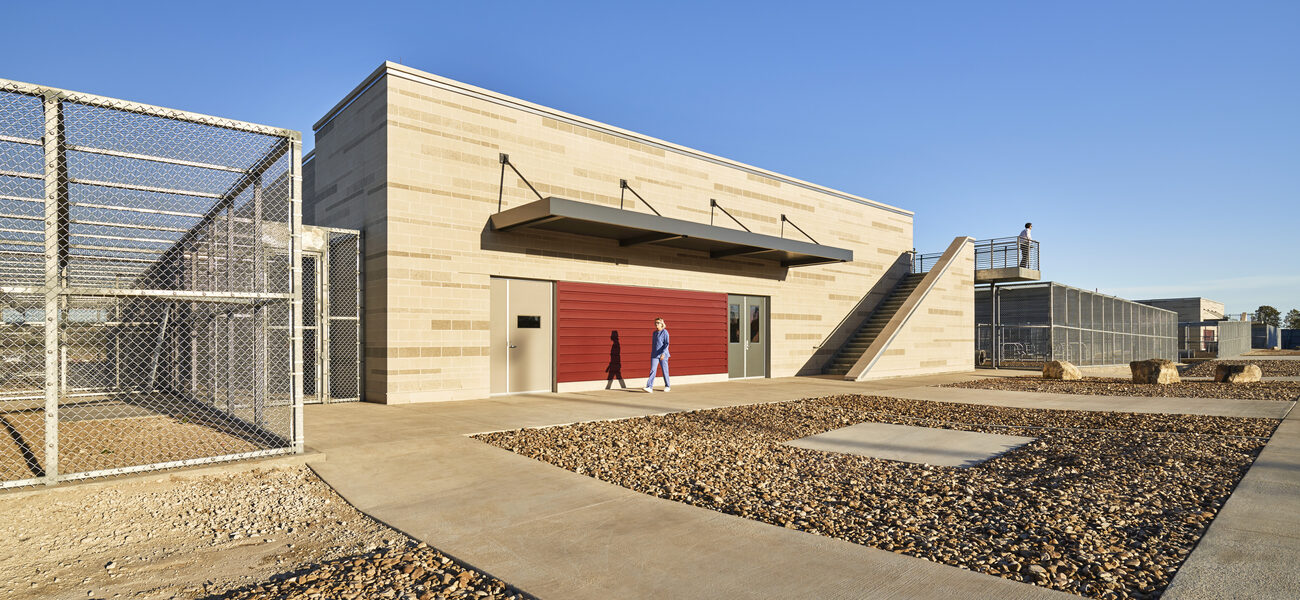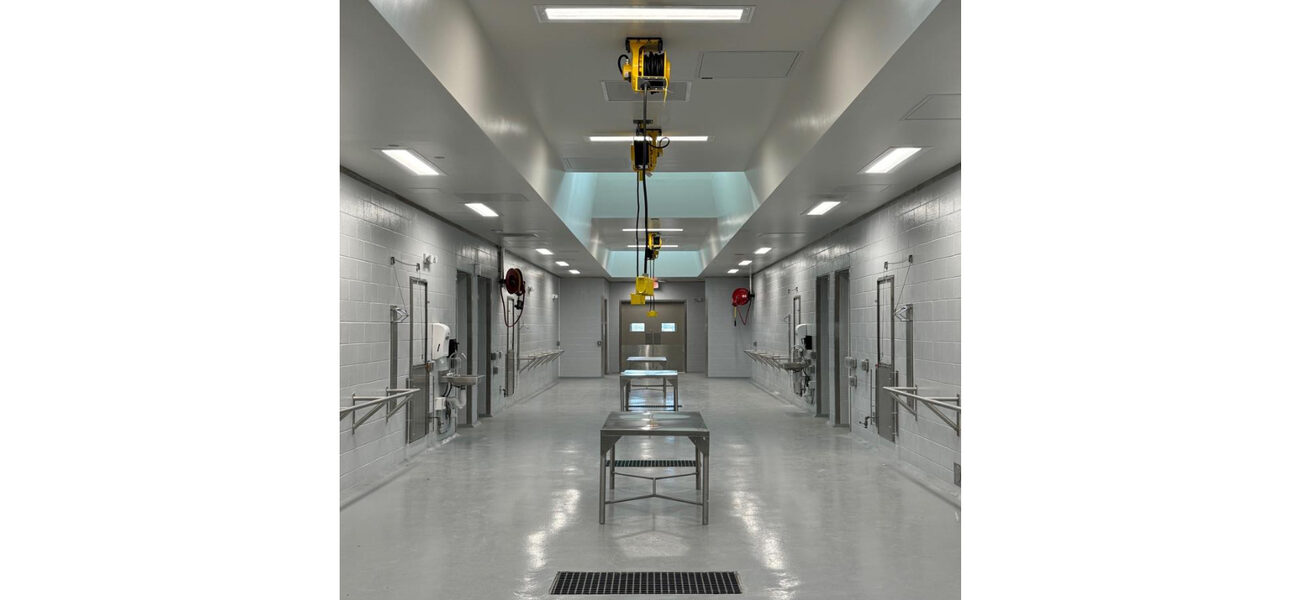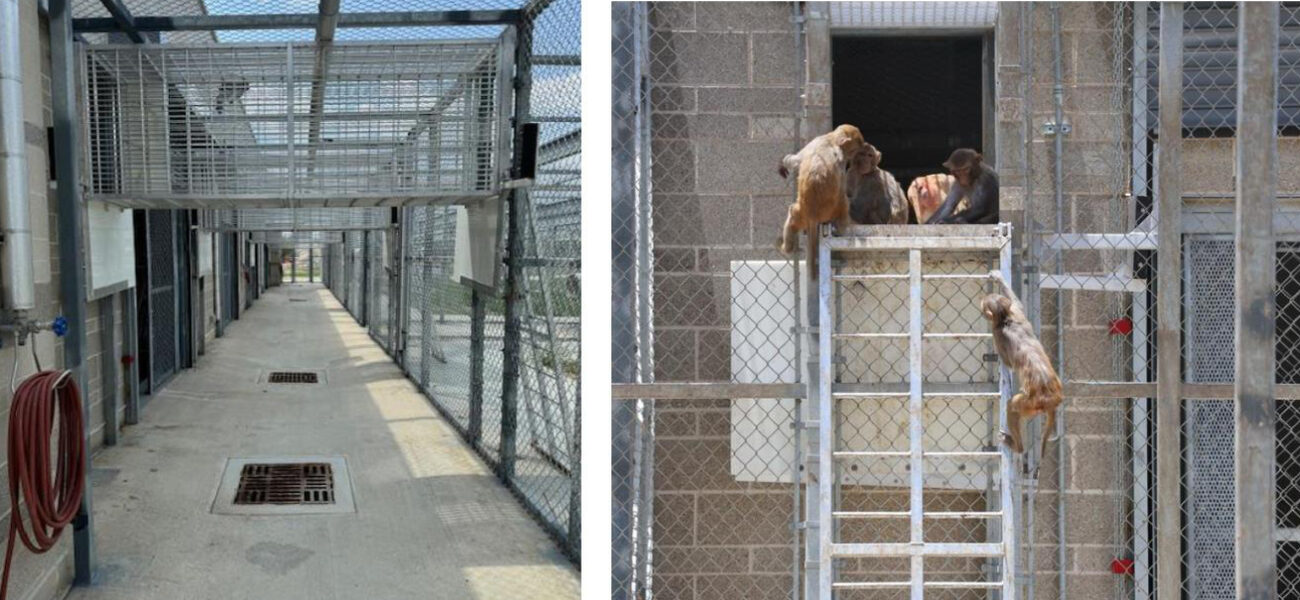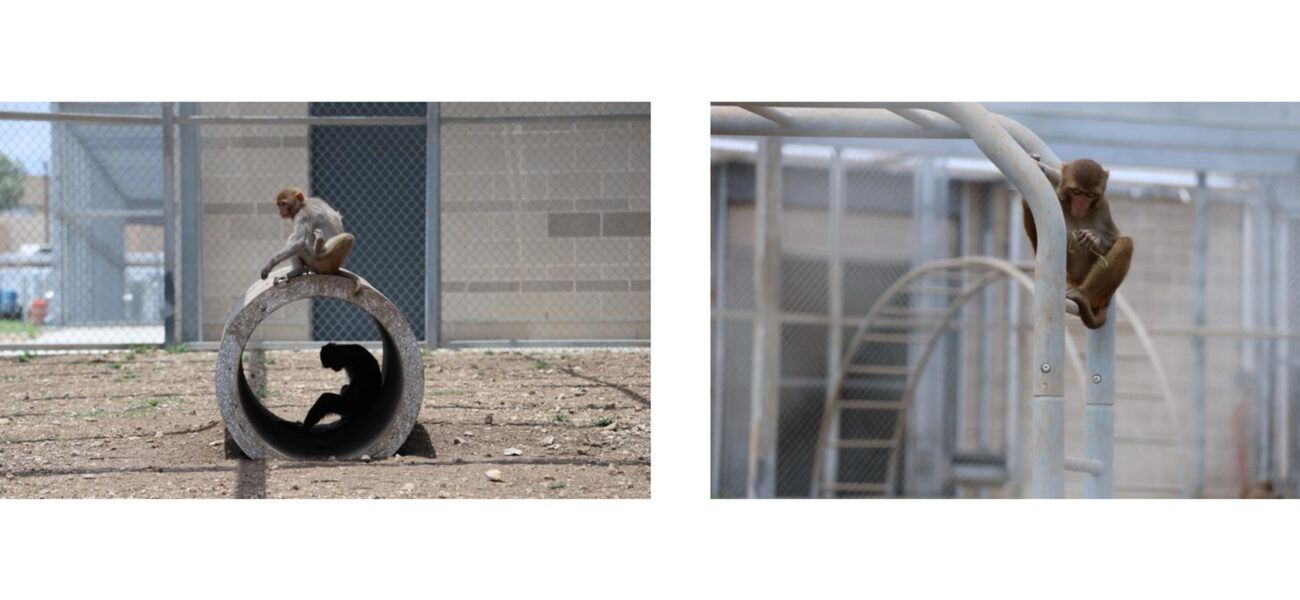As the highlight of a 2018 master plan, Texas Biomedical Research Institute (Texas Biomed) in San Antonio has opened a new primate research facility focused on animal welfare, human safety, and operational efficiency as guiding principles. The new Animal Care Complex (ACC) includes three modular breeding and holding facilities, each with a capacity of up to 300 animals of multiple species. The spacious facility has five indoor rooms which range from 400 to 800 sf, and outdoor yards as big as 5,500 sf.
Texas Biomed is already home to North America’s largest baboon population dedicated to research, as well as the landmark Southwest National Primate Research Center (SNPRC), established in 1999. SNPRC is part of a network of National Primate Research Centers funded by the National Institutes of Health, providing specialized technologies and resources to investigators around the world. Texas Biomed is also home to the only privately owned BSL-4 lab in the country, and plans to expand these high containment capabilities in the future.
Other guiding principles that emerged from the master plan include improving all facilities; strengthening local, regional, and international partnerships; and pushing the envelope to become global leaders in infectious disease research.
Year-Round Breeding
Although the master plan identified a high need for BSL-2 lab space, stakeholders prioritized space for animals and their handlers.
“Leadership and the Board were all very much committed that the first buildings implemented out of this plan would be for the animals and the people who take care of them,” says Rachel Nelan, principal and senior planner at Flad Architects.
Macaque monkeys, in particular, are known as “gold standard” scientific models used to develop and test vaccines and therapeutics for diseases like HIV/AIDS, Alzheimer’s, and certain cancers. Alternatives to animal research such as computer modeling or cell tissue culture are evolving, but cannot currently replicate or replace the scientific applications of using living physiological primate systems in biomedical research, as concluded in a recent report by the National Academies of Sciences, Engineering and Medicine.
But the supply of nonhuman primates for research has been short worldwide. In fact, a prescient 2018 NIH report predicted that demand would outgrow supply in the near future, which, indeed, happened by 2021 after the COVID-19 pandemic, partly due to supply chain issues.
Also in 2021, the extreme weather event known as “Snowmageddon” hit San Antonio, normally a temperate place, and caused widespread power outages and a lack of water supply for days.
This double whammy in 2021 shined a spotlight on the need to breed more animals locally, relying less on imports, and having the capacity to do this in expanded and protected indoor spaces.
“We currently house about 1,200 macaques on campus, and through our master plan, we want to triple that number in the next 10 years,” says Blake Harrington, facilities project manager at Texas Biomed.
To breed and house animals year-round, the ACC was designed to be prepared for extreme hot or cold weather, with features such as added insulation inside the concrete masonry units; in-slab radiant heating, which circulates warm liquid throughout the concrete floors to provide even heating; and destratification fans, which help re-circulate warm air near the ceiling back down closer to the floor where the animals are.
In the winter, roll-up garage doors have sensors that activate forced-duct heating when they touch the floor. In warmer weather, a misting system in the outside enclosure gives animals the opportunity to cool down.
Animals at the ACC can choose whether to be indoors or outdoors year-round, except when the temperature dips below 50 degrees, which exceeds the standard of 45 degrees indicated by the Animal Welfare Act.
Comfortable for Both Animals and Humans
Each breeding and holding facility in the ACC consists of an indoor central work corridor, flanked on each side by indoor and outdoor spaces. Large skylights fill the hallway with natural light, reducing electrical costs and enhancing workplace quality for humans.
“For staff ease, everything that they need is accessible from this corridor. It’s close by and convenient,” says Nelan.
The largest indoor animal rooms are 26 by 31 feet, with 11-foot-tall ceilings, which give primates plenty of space to perch at different heights without making it overly difficult for animal caregivers and ACC staff to access them. Perches are made of high-density polyethylene. Nine-gauge chain link fencing on the ceiling provides another substrate on which the animals can move around.
Designers even considered details down to the texture of the flooring, which they made more gritty for human-only areas, and less gritty for animal areas.
Transferring animals from indoors to outdoors is easier with arboreal transfer chutes that are designed with species-typical behavior in mind. The chutes are spacious—3 feet tall by 2 feet wide—and are raised off the ground, so that animals feel safe to cross even when their human handlers and caregivers are nearby. Macaques, especially, enjoy the chute as a place to socialize.
To further enhance animal welfare, transfer chutes are equipped with a lightweight pivoting door as opposed to a guillotine-style door. Humans can raise and lower the doors with an ergonomic handle which is located below the chute, so that animals are safe from interfering with the mechanism.
A service corridor runs between indoor and outdoor areas, allowing staff to observe both the indoor enclosure, as well as 360 degrees around the outdoor enclosure.
Plenty of Space to Play
Outside, animals have multiple opportunities for physical enrichment on a variety of playground structures, like concrete culverts. The area is covered in natural substrates appropriate for each species—grass for macaques and rocky dirt for baboons.
Play yards can be flexibly joined together by swinging doors. This allows multiple groups of 50 or 60 animals in different enclosures to combine into one extra-large group. The large swinging doors also open wide enough for maintenance vehicles to pass through if necessary.
“The best enrichment that we can provide for these animals is social enrichment,” says Harrington. “Nonhuman primates need social partners, and increasing those social partners increases their social complexity and welfare.”
Up to 80 animals can be accommodated in the largest enclosures. Animals can also be separated into smaller breeding or social groups, such as harem breeding groups, where one adult male is grouped with multiple females and their offspring. Even smaller enclosures can house up to 40 animals, which is significantly more than the maximum of 10 to 12 macaques at other campus facilities.
“We can also develop breeding groups like those in the wild, with multiple males and multiple females—much larger groups in a more naturalistic configuration,” says Harrington.
Flexible, Efficient Design
“We wanted to build a really flexible space that could house any nonhuman primate that we’re interested in putting here,” says Harrington. “Everything from perches to chutes to transfer doors is designed to accommodate a 40-kg adult baboon, yet is also comfortable for some of our smaller primates like macaques.”
For both safety and efficiency, a safety enclosure inside each animal room allows ACC staff to enter the room with a protective barrier, and do everything from observations, feedings, providing enrichment, and even cleaning with a nearby pull-down hose from the ceiling. In fact, the entire room can be washed from the safety enclosure. Drain troughs were placed directly underneath perches to streamline sanitation and waste disposal. Additionally, walls were designed with high-performance coatings and cants to facilitate frequent wash-downs.
Animal rooms were designed so that any mechanicals are protected and accessible in case of maintenance needs. “We are minimizing maintenance time, which allows us to maximize our time with the animals for building rapport and training,” says Harrington.
Each modular building is consistent in layout, but each has a unique feature that supports the whole campus. One building has a kitchen for food preparation and storage, and another contains a washing room for enclosures. The kitchen area has a wide enough door to receive a week’s worth of food pallets.
Every building also has a dedicated procedure room where animals receive routine healthcare, like wellness checks or tuberculosis tests. Adjacent to the procedure room is a holding room where animals can be monitored until they are ready to rejoin their social group.
A new, 18,000-sf Animal Health Center is now being built next to the enclosure buildings. It will include a histology lab, clinical pathology lab, procedure rooms, surgical suites and contemporary staff meeting space.
With its easily replicable modular and flexible design, the ACC accommodates a range of primates needed for infectious disease research, and is prepared to accommodate other animals that may be needed in the future.
By Joy Lin




